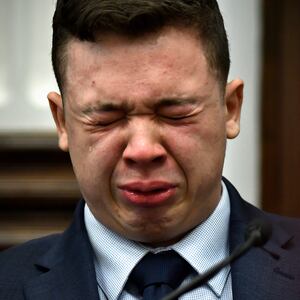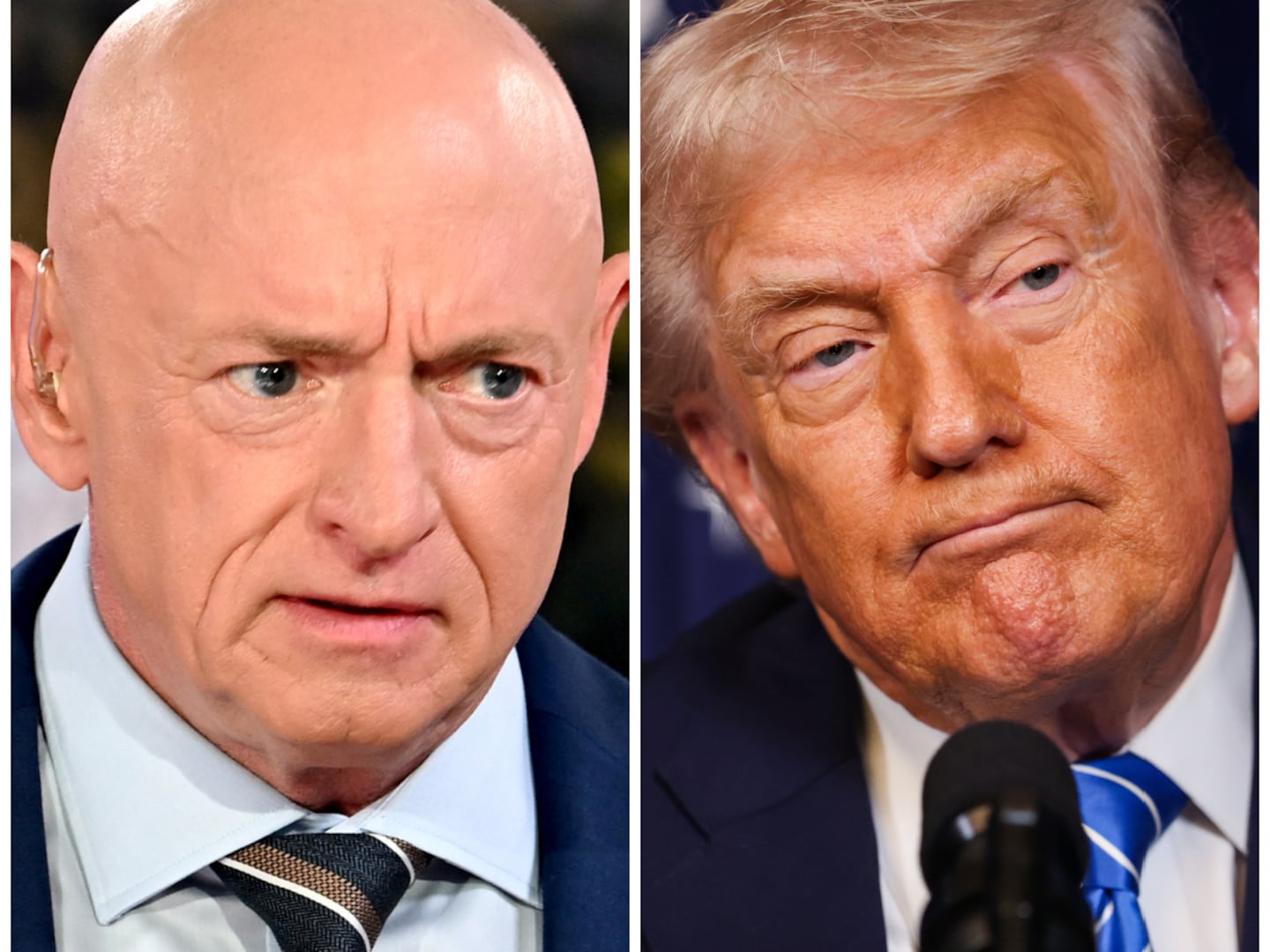KENOSHA—Kyle Rittenhouse, the notorious, gun-toting white teenager accused of murdering two people and trying to kill a third during a police-violence protest last August, has been found not guilty on all the charges against him in a Wisconsin courtroom.
Rittenhouse, 18, faced a slew of charges, including first-degree reckless homicide, over his conduct on Aug. 25, 2020, amid unrest in Kenosha, Wisconsin, after the police shooting of Jacob Blake, a local Black father. During two incidents caught on camera, Rittenhouse fired an AR-15 and killed 36-year-old Joseph Rosenbaum and 26-year-old Anthony Huber. He also severely wounded Gaige Grosskreutz, now 27.
As the verdict was being read, a trembling Rittenhouse wept and collapsed. His mom, Wendy Rittenhouse, and other family were seen crying in the courtroom gallery. After Kenosha Judge Bruce Schroeder insisted he “couldn’t have asked for a better jury” and said they were free to leave the Kenosha courthouse, a sheriff’s deputy escorted Rittenhouse through a back door.
“The jury has represented our community in this trial and has spoken,” Assistant District Attorney Thomas Binger told reporters.
Mark Richards, one of Rittenhouse’s attorneys, said in a press conference that the teenager “has a huge sense of relief” and “wants to get on with his life.”
“We’re happy that the jury took the time,” Richards said, adding that Rittenhouse is now “on his way home.” “To say that we were relieved would be a gross mis-understatement.”
The verdict, which was reached in 24 hours, marks the end of one chapter of a highly divisive case that prompted conservatives to rally behind the teen—and the latest episode in a saga that’s served as a testament to the ever-more-bitter divides over gun rights and race in America.
Huber’s parents said in a Friday statement that they are “heartbroken and angry” by the jury’s decision. Attorneys for Grosskreutz added in their own statement that Rittenhouse’s acquittal “may mean justice delays [but] it will not mean justice denied.”
“Today’s verdict means there is no accountability for the person who murdered our son,” Karen Bloom and John Huber said. “It sends the unacceptable message that armed civilians can show up in any town, incite violence, and then use the danger they have created to justify shooting people in the street. We hope that decent people will join us in forcefully rejecting that message and demanding more of our laws, our officials, and our justice system.”

About two hours after the verdict, only a few dozen protesters had stuck around outside the courthouse—with just a handful identifying themselves as the teenager’s supporters. But the shocking acquittal put Kenosha on edge, and raised the prospect of a new wave of unrest in Wisconsin and across the country.
“There is a significant risk that there is going to be unrest regardless of the outcome. Simply because the case is so politicized and whichever side prevails, the folks who support the other side are going to feel a grave injustice has occurred,” Keith A. Findley, a law professor at the University of Wisconsin, told The Daily Beast ahead of the verdict.
“To people on the left and Black Live Matter members, an acquittal is just another expression of how the system coddles and protects white defendants,” Findley added.
Kenosha residents immediately expressed their outrage over the decision.
“Oh my god! I knew it!” Charisse Henderson, 44, told The Daily Beast. “Between the judge and how this clown show played out … the judge was all for Kyle. It doesn’t make sense. My heart just goes out to the victims of this situation. That judge didn’t care about the victims or the parents. It was in plain sight, for the whole world to see. Was he Kyle’s grandfather or something?”
Henderson said the Black community feels silenced again, after the police officer who shot Jacob Blake seven times also was not held accountable.
“I am very much worried about what’s going to happen [today] in Kenosha,” she said. “It’s another slap in the face. I just hope that...just don’t burn down anything. We’ve got few enough places still standing in Kenosha.”
Throughout proceedings plagued with threats of a mistrial and several contentious arguments between Schroeder and prosecutors, the state argued Rittenhouse was a “teenage vigilante” who traveled from Illinois to Wisconsin with an AR-15 to meet other armed people who styled themselves guardians of local business.
But throughout the trial, the prosecution made a series of decisions, ranging from who they put on the stand to what charges they chose to hit Rittenhouse with, that legal experts told The Daily Beast may have only bolstered the defense. And while there was a bevy of video evidence to prove Rittenhouse’s role in the shootings, prosecutors failed to provide any new damning material in the trial that would blow the self-defense claim out of the water.
“This case was always going to be an uphill battle for the prosecution,” John Gross, a clinical associate professor and the director of the Public Defender Project at the University of Wisconsin-Madison Law School, told The Daily Beast last week. “But in a case of this magnitude, the prosecution should have been over-prepared and they were not. They did not look deeply enough at what the defense was going to say, or even what the judge had previously ruled.”
Yearning for a conviction was stoked in the public imagination—if not in the courtroom—by the revelation that Rittenhouse appeared after his arrest with members of at least one extremist group, and enjoyed plenty of far-right fundraising and other support online. As The Daily Beast previously reported, Rittenhouse’s social-media accounts at the time of the shooting were also rife with support for pro-police causes, and he displayed a fervent affinity for guns. Buzzfeed News further reported that Rittenhouse posted a TikTok video from a Jan. 2020 Donald Trump rally in Des Moines, Iowa—where he sat in the first row.
The defense team, however, insisted that the shootings were justified because they were done out of self-defense. To argue self-defense in Wisconsin, Rittenhouse’s attorneys were trying to show that the then-17-year-old had no choice but to use deadly force “to prevent imminent death or great bodily harm to himself.”
During the already-chaotic protest over the Blake’s shooting last August, a video played in court showed Rittenhouse, then 17, shooting Rosenbaum after the unarmed man tossed a plastic bag his way. As Rittenhouse ran away from the scene, still holding his AR-15, the teen is seen in another video running down the street with several protesters in tow.
Testifying on his own behalf, Rittenhouse insisted to the jury that Rosenbaum threatened to kill him twice—including one instance when the deceased man was armed with a chain while yelling: “If I catch any of you fuckers alone, I’m going to kill you.”
On Friday Rittenhouse’s defense attorney said they felt they had no choice but to put Rittenhouse on the stand to testify.
“In Wisconsin, if you don’t put a client on the stand, you’re going to lose. Period,” Richards said. “Had to put him on. It wasn’t a close call.”
When pressed by prosecutors during cross-examination about why he felt the need to shoot the unarmed Rosenbaum, Rittenhouse insisted that he “didn’t want to have to shoot him” but if he had let his weapon go, Rosenbaum “would have used it to kill me and probably more people.”
Dr. Doug Kelley, a forensic pathologist with the Milwaukee County Medical Examiner’s office, previously testified that Rittenhouse ultimately shot Rosenbaum four times. That included twice in the front, once in the back, and once alongside his head.
But a prosecution witness, Rosenbaum’s fiancée, Kariann Swart, may have sowed doubt into the circumstances the fatal interaction. On the stand, she disclosed that Rosenbaum was on medication for bipolar disorder and depression—and could not fill up his prescriptions from a local pharmacy that was boarded up due to the days-long unrest.
After the shooting, Rittenhouse said he tried to run away from the group of protesters, which included Huber. Video played in court showed Huber hitting Rittenhouse in the head with his skateboard and reaching for the teenager’s gun after Rittenhouse stumbled to the ground.
Rittenhouse is then seen on video shooting Huber in the chest before Grosskreutz steps toward the teenager. Prosecutors stated that Rittenhouse then fired a second shot that hit Grosskreutz’s arm, before he got up from the ground and fled the scene. Kelley, the medical examiner, noted in his testimony Huber was killed with a single gunshot to his chest that also caused major trauma to his heart and lungs.
Grosskreutz, who also testified for the prosecution, told jurors that the gunshot wound he sustained from Rittenhouse “vaporized” his bicep.
“I thought the defendant was an active shooter,” Grosskreutz said, adding that at one point during the altercation he thought “that I was going to die.”
But Grosskreutz’s account of the shooting may also have muddied the waters after he admitted on the stand that he was armed that night—and that he initially falsely told investigators his pistol had fallen out of its holster.
While Grosskreutz was supposed to be the prosecution’s star witness, Gross previously told The Daily Beast, he ended up “describing a self-defense theory for Rittenhouse.”









